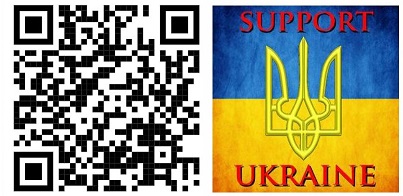Easter has traditionally been the most important holiday on the Orthodox and Greek Catholic calendar, the culture’s celebration of the coming of spring as well as of the resurrection of Christ. We took a look at what makes Easter what it is in Ukraine.
The trees have blossomed, the weather’s getting warmer, and Easter preparations are in full effect. In Ukraine Easter is considered one of the most important religious holidays and it’s one of the favourite ones, too. Lots of people still wake up exceedingly early on Easter morning and head for church, where a priest in gorgeous robes consecrates paskhas (cake-like Easter breads) and pisanky (Ukraine’s famous painted Easter eggs).
Other foods, such as cheese, butter, wine, salt, salo, horse radish, eggs, ham, sausages, and various seeds are also brought to church, arranged into the basket around the centrepiece paskha, which is typically decorated with colourful glazes. Immediately after the ceremony people hurry home to share the blessed paskha, sometimes knocking it back with a tumbler of sweet wine, and thus beginning the Easter breakfast. The paskha and pisanky are the first associations that come to mind when we think about the attributes of Easter in this country. Locally, they’re like the Christmas tree in much of the West: something that you can’t do the holiday without. During the Easter season, all the local supermarkets are full of Easter stuff, including paskhas, which are stacked up in cheerful piles, wrapped in cellophane. But it’s always better to bake your own bread, which most Ukrainians in fact still do.
A Family Affair
Perhaps not surprisingly, tradition surrounds the paskha. Preparing a good one was considered one of the most important tasks of the year and in the past people believed that the future could depend on how this holiday bread turned out. Every homemaker, therefore, wanted her paskha to be the best and the biggest, and so while baking it she performed various magical gestures and muttered incantations – these being holdovers from Ukraine’s rich pagan past, which in fact hasn’t completely disappeared from village life in the nation’s west. The bread-baker had to keep her thoughts pure and the household had to remain quiet so that the bread could retain its fluffy texture in the oven. It was also customary to keep the baking of the paskha strictly a family affair: neighbors or strangers were not permitted to enter the house while the paskha was coming to life. The paskha’s ancient roots as a ritual food were evidenced not only by the rituals performed during the preparations and the baking, but also by the decorations which adorned it. The top of the paskha was covered with signs, some of them pre-Christian. There were crosses, certainly, but also solar signs, rosettes, leaves, pine cones, and sometimes even birds and bees. Given the deep and even mystical symbolism that inheres in this food, you can see why buying one at a supermarket is a shame. Nor can you celebrate Easter here without pisanky. There are thousands of ways to decorate pisanky nowadays. The simplest and one of the best-known ways is to put eggs and onion peels into boiling water. The peels will stain the eggs a nice yellow or brown. Another way is to paint it or plaster it with stickers. Now, what’s the point of decorating eggs in the first place? The tradition goes back to the pagan past. The egg has always been perceived as a source of life, a stand-in for the sun and the universe. Easter is a big family holiday in this part of the world, so you’ve got to prepare a lot of food. All that Easter food usually goes into a basket, which the mistress of the house places in the middle of the table during Easter dinner, or presents to neighbors or friends. According to Ukrainian tradition the Easter basket is considered the pride and joy of a family. People judged the mistress of the house according to the way her Easter basket looked, what it contained, and how it was decorated. The basket should be lined with a newly embroidered serviette or with a white napkin. An embroidered serviette should be used to cover the basket. Very ambitious housewives have two embroidered serviettes - one for lining the basket and one for covering it. Remember, the basket should contain only a sampling of the foods you are going to eat at Easter: it’s a symbolic thing. The basket will look finished after you tie a red ribbon around the handle and stick some spring flowers in it. Here’s another Easter tradition that you see a lot in small towns: the cutting of pussy-willow branches. Since pagan times, pussy-willow blooms have been seen as a sign of spring and were thought to have healthful qualities if ingested. Pagan Ukrainians would cut the branches and swat one another with them, to bless each other. When Palm Sunday began to be celebrated the pussy-willow assumed the duty of the palm branch that was used in the rest of the world. Nowadays people present one another with pussy-willow branches instead of flowers. They don’t beat each other with them anymore.
Viktoria Vasilchenko
